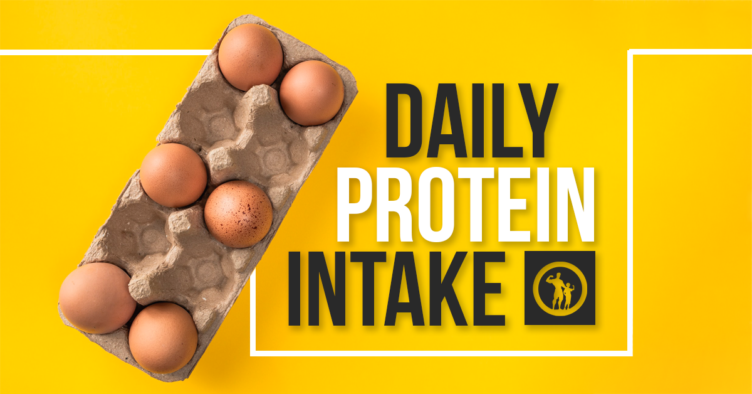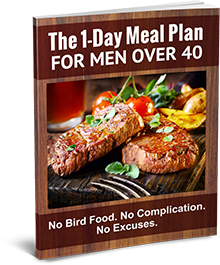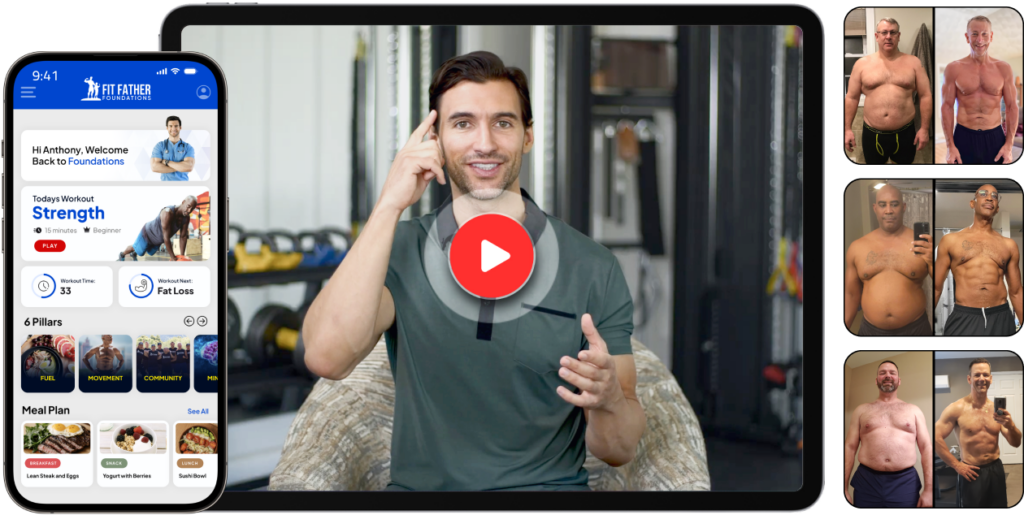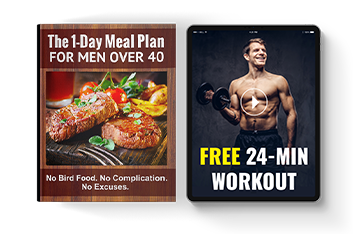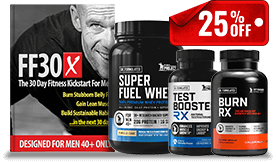Meeting daily protein intake requirements is the best way to maintain a healthy weight, lean muscle mass, and a speedy metabolism.
You might have heard conflicting information about how much protein you really need, and how much protein is too much.
Knowing the facts can optimize the way you look and feel, and improve your overall health!
How Protein Affects Muscle Building and Weight Loss
Meeting daily protein intake needs is beneficial for muscle building and weight loss for numerous reasons:
Muscle Building
After ingesting protein, your body breaks it down and uses amino acids to build or maintain muscle mass in your body.
Regular workouts are the best way to sustain or build muscle, and eating plenty of protein optimizes your results.
Protein helps your body repair muscle fibers after strength training or intense aerobic workouts. Without enough protein muscle breakdown can occur, even if you exercise daily.
Eat protein-rich foods with carbohydrates before workouts and additional protein foods plus carbohydrates post-workout to build or maintain lean mass.
Try a banana with peanut butter, Greek yogurt topped with fruit, a protein shake or bar, a chicken wrap, or eggs and avocado on whole-grain toast.
Weight Loss
Protein can accelerate weight loss too.
Studies show that protein helps increase satiety, or feelings of fullness, and it boosts your body’s metabolism.
What that means is you can burn additional calories and body fat during periods of energy restriction for weight loss, without feeling hungry or deprived.
Protein optimizes muscle mass gains and muscle burns more calories than body fat, even if you're resting.
Unlike sugar and other carbohydrates, protein doesn't cause blood sugar spikes and subsequent drops.
Therefore, it's useful for avoiding excess fat storage and staying lean.
Studies show that low-carb diets, which are often paired with higher protein and fat intakes, are effective weight loss diets for many adults.
Daily Protein Intake for Men
Eating the right amount of protein daily is the best way to achieve and maintain the body weight and physique you desire.
Daily protein needs vary by size, gender, and activity level.
Minimum Daily Protein Intake Requirements for Men
The minimum daily protein intake requirement for men, set by the Institute of Medicine, is 56 grams of protein daily.
However, consuming additional protein is beneficial for many men, especially if you exercise regularly or your goal is weight loss or muscle building.
Protein Needs for Active Men
The Academy of Nutrition and Dietetics recommends protein intakes of 1.2-2.0 grams of protein per kilogram of body weight daily for athletes and active adults.
This is equivalent to 0.5-0.9 grams of protein per pound of body weight per day.
Therefore, a 180-pound active man needs about 90-162 grams of protein daily to maintain lean mass and optimize his health.
According to the International Society of Sports Nutrition position stand, eating 20-40 grams of protein every 3-4 hours throughout the day and ingesting 30-40 grams of casein protein before bed stimulates muscle building and increases your body’s metabolism.
Consider adding protein shakes to your daily meal plans to get or stay lean.
Best Protein Sources for Men
Any healthy protein-rich food is beneficial for muscle-building and weight loss or healthy weight maintenance in men.
Animal-based protein foods (and soy protein) contain all the essential amino acids your body requires to build and maintain muscle mass.
If you follow a vegan diet or eat little meat, poultry, fish, or dairy foods, you can still get all the essential amino acids your body needs by eating a wide variety of plant protein foods throughout the day.
Add some of the following protein foods to your diet to optimize health and stay lean:
Complete Protein Foods
Examples of complete protein foods, containing all nine essential amino acids, include:
- Chicken
- Fish
- Turkey
- Duck
- Shrimp
- Scallops
- Lobster
- Other types of seafood
- Pork
- Very lean organic beef
- Venison
- Milk
- Plain Greek yogurt
- Low-fat cottage cheese
- Reduced-fat cheese
- Kefir
- Whey protein powder
- Casein protein powder
- Low-sugar protein bars
- Edamame
- Tofu
Additional Plant-Based Proteins
Eat a variety of the following foods to ensure you're meeting daily essential amino acid requirements with plant proteins:
- Black beans
- Pinto beans
- White beans
- Navy beans
- Other dried beans
- Lentils
- Chickpeas
- Green peas
- Seitan
- Nuts
- Seeds
- Nut butters
- Quinoa
- Protein-fortified plant milks
- Plant-based protein powders
- Vegan protein bars
Aim to eat nutritious protein- and fiber-rich foods at every meal and snack, and space out proteins evenly throughout the day to build or maintain muscle mass, control your weight, and optimize the way you look and feel.
How Much Protein is Too Much?
While eating more protein can increase satiety, metabolism, and muscle building, more isn’t always better when it comes to macronutrients.
Eating too much protein can cause unpleasant side effects and your body can only utilize so much of it.
It excretes or stores protein it can't use.
Maximum Safe Levels
According to a study in Food & Function, long-term consumption of two grams of protein per kilogram of body weight (0.9 grams of protein per pound) is safe for healthy adults.
For a 180-pound man, this equates to 162 grams of protein daily.
Tolerable Upper Intake Levels
The same study notes that the tolerable upper intake limit for protein is 3.5 grams per kilogram of body weight daily, or 1.6 grams of protein per pound.
This equates to 288 grams of protein for a 180-pound man.
Tolerable upper intake levels are the maximum safe amount most adults can consume without unpleasant side effects or increased health risks.
Authors of the study report that chronic high protein intakes can lead to renal, digestive, and vascular problems.
Protein Content of Common Foods
The list below shows the protein content of some of your favorite protein-rich foods and their typical portion sizes:
- 3 ounces of grilled chicken: 28 grams (141 calories)
- 3 ounces of lean steak: 26 grams (158 calories)
- 3 ounces of turkey: 25 grams (135 calories)
- 1 scoop of protein powder: 20-25 grams (110 calories)
- 3 ounces of pork: 22 grams (122 calories)
- 3 ounces of salmon: 22 grams (155 calories)
- 3 ounces of tuna: 22 grams (99 calories)
- 3 ounces of shrimp: 20 grams (101 calories)
- 6 ounces of Greek yogurt: 18 grams (100 calories)
- 3 ounces of lobster: 16 grams (76 calories)
- 4 ounces of low-fat cottage cheese: 14 grams (81 calories)
- 3 ounces of scallops: 14 grams (75 calories)
- 2 large eggs: 12 grams (142 calories)
- 1 ounce of soy nuts: 12 grams (120 calories)
- 1/2 cup of cooked legumes: 7-11 grams (94-197 calories)
- 1/2 cup of cooked edamame: 9 grams (95 calories)
- 1 ounce of nuts or seeds: 4-9 grams (138-185 calories)
- 1 cup of skim milk: 8 grams (85 calories)
- 2 tablespoons of nut butter: 7 grams (180 calories)
- 1 piece of reduced-fat cheese: 6 grams (50 calories)
As you can see, it's simple to meet your daily protein intake needs when carefully planning your diet and choosing a protein-rich food at each meal and snack.
Adding a protein shake to your meal plan provides an additional 25-40 grams of protein, depending on how much protein powder you use and what you mix it with.
Here’s A Free Weight Loss Meal Plan For Busy Men 40+
Discover exactly what to eat for breakfast, lunch, and dinner to lose belly fat & feel energized 24/7 without hard dieting...
Sample Healthy Meal Plans for Men
A good way to plan healthy meals for men, optimize energy levels and lean mass, and meet daily protein intake goals is to consider the following guidelines:
- Fill one-fourth of each plate with protein foods
- Fill one-fourth of your plate with fiber-rich starches like sweet potatoes, corn, peas, beans, lentils, other legumes, or whole grains
- Fill one-half of your plate with non-starchy veggies like leafy greens, cucumbers, bell peppers, tomatoes, mushrooms, broccoli, cauliflower, zucchini, celery, or asparagus
- Eat three servings of dairy foods, protein-fortified plant milk, or protein powder shakes
- Consume healthy fats (olive oil, avocados, nuts, seeds, nut butters, hummus, or olives) at each meal
Consider some of the following protein-rich meal plans to get and stay healthy, maintain an ideal weight, keep energy levels high, and optimize or increase lean mass:
Day 1
Breakfast
- 1/4 plate of scrambled eggs
- 1/4 plate of oatmeal
- 1/2 plate of low-sodium vegetable juice plus mushrooms sautéed in olive oil
- Coffee or tea
Snack
- A protein powder shake blended with almond milk and fruit
Lunch
- 1/4 plate of grilled chicken
- 1/4 plate of quinoa
- 1/2 plate of leafy greens topped with sunflower seeds
- Oil-based salad dressing
- Coffee or tea
Snack
- Plain Greek yogurt
- Berries or other types of fruit
Dinner
- 1/4 plate of grilled salmon
- 1/4 plate of sweet potatoes with olive oil-based tub butter
- 1/2 plate of cooked asparagus topped with sesame seeds
- Seasonings of your choice
Snack
- A casein protein powder shake
Day 2
Breakfast
- 3/4 plate of a veggie omelet with feta cheese or olives
- 1/4 plate of whole-grain toast with avocado
- Coffee or tea
Snack
- A protein powder shake blended with almond milk and fruit
Lunch
- 1/4 plate of lean steak
- 1/4 plate of brown or wild rice
- 1/2 plate of zucchini or bell peppers sauteed in olive oil
- Coffee or tea
Snack
- Low-fat cottage cheese
- Pineapple or any other favorite fruit
Dinner
- 1/4 plate of grilled shrimp
- 1/4 plate of lentil and vegetable soup
- 1/2 plate of steamed broccoli or cauliflower
- Seasonings of your choice
Snack
- A casein protein powder shake
Day 3
Breakfast
- A protein powder shake blended with fruit and walnuts or chia seeds
Snack
- Reduced-fat cheese
- A banana or another fruit of your choice
Lunch
- 1/4 plate of canned light tuna
- 1/4 plate of whole-grain toast
- Avocado slices or avocado oil mayonnaise
- 1/2 plate of sliced cucumbers or tomatoes
- Coffee or tea
Snack
- Hummus
- Fresh carrot or celery slices
Dinner
- Chicken and vegetable chili with black beans (get the recipe)
Snack
- A casein protein powder shake
How to Increase Protein for Weight Loss
To effectively lose weight by eating protein-rich foods, it's important to burn more calories than you eat.
Try the following weight loss tips and watch the excess fat melt away!
Reduce Your Overall Calorie Intake
Many men need about 1,500-1800 calories daily to drop excess weight.
However, your personalized weight loss calorie needs and daily protein intake goals are based on your size, age, and activity level.
Aim to reduce your current intake by about 500-1,000 calories daily to drop about 1-2 pounds per week.
Eat protein foods and non-starchy vegetables before starches and fats to fill you up while consuming fewer calories.
Drink More Water
Increasing your water intake helps you feel full and effectively reduce calories.
Drink water when you first wake up, before each meal and snack, and at other times all throughout the day.
Aim for at least 16 cups of fluids per day for men.
Boost Protein and Fiber
Eat more protein than you normally do without exceeding 1.6 grams of protein per pound of bodyweight daily.
Add protein foods to each meal plus non-starchy vegetables like cucumbers, tomatoes, asparagus, broccoli, cauliflower, leafy greens, bell peppers, celery, and mushrooms.
These foods, plus healthy fats, should make up the majority of each plate during weight loss.
Avoid Certain Foods
Protein foods to avoid during your weight loss journey include:
- Cold cut meats
- Sausage
- Pepperoni
- Ham
- Hot dogs
- Fatty cuts of steak
- High-fat ground beef
- Whole milk
- Fruit flavored yogurt with added sugar
- Regular cheeses
- Fried meats
- Fried poultry
- Fried cheeses
Additional foods to steer clear of include:
- Sweets
- Ice cream
- Soda
- Sweet tea
- Other sugar-sweetened drinks
- White bread
- White rice
- Other refined grains
- French fries
- Fried onion rings
- Other fried foods
- Baked goods
Aim to reduce your carbohydrate intake and slightly boost protein to keep you full while reducing calories for weight loss.
Consider drinking protein shakes in place of breakfast or lunch to cut calories without feeling deprived or hungry.
Join an Organized Weight Loss Program
Join an organized health program for men to boost your chances of weight loss or effective muscle building.
Sign up for the Fit Father Project 30X (FF30X) program to reach your goal weight and stay healthy for life.
Upon joining you receive custom meal and menu plans, fat-burning and muscle building workouts, motivational support from health experts, private social media group access, and much more.
Sign up for a FREE meal plan and workout to get started today!
Meeting daily protein intake requirements isn't difficult with the right plan in place.
Erin Coleman is a registered and licensed dietitian with over 15 years of freelance writing experience. She graduated with her Bachelor of Science degree in nutritional science from the University of Wisconsin-Madison, and completed her dietetic internship at Viterbo University in La Crosse, Wisconsin. Prior to beginning her career in medical content writing, Erin worked as Health Educator for the University of Wisconsin-Madison Department of Internal Medicine. Her published work appears on hundreds of health and fitness websites, and she’s currently working on publishing her first book! Erin is a wife, and a Mom to two beautiful children. The FOUNDATIONS Program is created by Dr. Anthony Balduzzi for Men 40+ who want Lifelong Health. In just 6-Weeks following FOUNDATIONS, you'll experience: FOUNDATIONS has transformed 60,000 lives! Are you ready to experience true lasting health & results?Erin Coleman, B.S. Nutritional Science, R.D., L.D.
Writer, Fit Father Project
Join our 6-Week Doctor Designed Health Program. You'll Gain Foundational Health for the Rest of Life.
*Please know that weight loss results & health changes/improvements vary from individual to individual; you may not achieve similar results. Always consult with your doctor before making health decisions. This is not medical advice – simply very well-researched info on daily protein intake for men.

